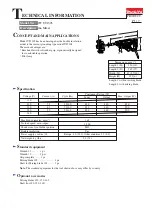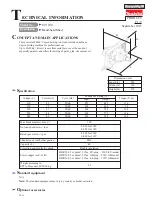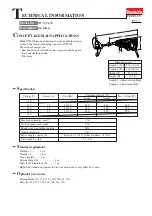
20
PA-CP
User Guide
The EFFECTS Channel
Overview
The
PA Series
features a built-in digital stereo
effects unit. Effects such as artificial reverberation, delay, echo
and chorus can be selected from the 16 presets. You can
independently control how much effect is added to each signal
in the mix using the channel FX sends. The overall level of the
effects in the LR and foldback mixes is adjusted using the
effects channel described here. An external input facility is
included so that the return from an additional independently
controlled effects unit can be mixed with the internal effects.
Alternatively the internal unit can be switched off and the
channel FX sends used to feed the external unit. The channel
can be muted using a footswitch for performer controlled
effects bypass, for example between songs. The effects may
also be turned on or off (bypass), and the preset changed
using MIDI.
The Signal Path
The signal flow diagrams shown here
illustrate how the effects system works.
A
Internal effects only
The channel signal is routed
through the fader direct to the main LR mix. A portion of the
signal is also routed to the internal effects processor by turning
up the channel FX send control. As this is sourced after the
fader, the balance between the direct and effects signal is kept
the same regardless of fader position. The processed signal is
routed through the FX channel fader back into the LR mix
where it adds with the direct signal.
B
Internal and external effects
Here the internal effects
work as described above. In addition, an external effects
processor is patched in as shown. The signals sent to this unit
are independently adjusted using the channel AUX send
controls which route it to the AUX output. The processor stereo
output is plugged into the EXT FX IN sockets. GAIN matches it
to the operating level of the channel. The external signal sums
with the internal effects and is routed through the FX fader to
the LR mix. This lets you work with two independently
controlled effects units returned through a common effects
master channel.
C
External effects only
If you prefer, you can switch off the
internal effects processor and use its FX sends and the FX
channel with your favourite external unit. This way, no controls
are wasted when the internal unit is not used.
Wet and dry signals
The signal sent from the channel
to the LR mix is referred to as ‘dry’. This is the original signal
with no effect added. The portion of signal routed through the
effects processor is referred to as ‘wet’ because it is effect only.
Consider room reverberation: The listener hears the voice of
the singer (dry) and also the acoustic reflections (wet) as the
voice reverberates around the room. The bigger the room the
more reverb is heard. The
PA Series
simulates reverb in the
same way. The reverb is created electronically using the digital
processor (wet) and then added to the direct (dry) signal. The
channel FX sends determine how much reverb is added to
each signal in the mix.
Adding effects to the foldback
The above describes how
effects are added to the LR mix which feeds the house
speakers. You can also add the effects to the foldback mixes
by turning up the FX channel FB1 and FB2 controls. The signal
is sourced post-fade so that the fader becomes the master
level control for the effects in the LR and foldback mixes.
A
LR MIX
GAIN
EXT FX IN
INTERNAL
FX
FX
AUX
FX CHANNEL
+
SUM
INPUT CHANNEL
AUX SEND
FX SEND
LR MIX
GAIN
EXT FX IN
INTERNAL
FX
FX
AUX
FX CHANNEL
+
SUM
INPUT CHANNEL
AUX SEND
FX SEND
EXTERNAL
FX
B
LR MIX
GAIN
EXT FX IN
INTERNAL
FX
FX
AUX
FX CHANNEL
+
SUM
INPUT CHANNEL
AUX SEND
FX SEND
EXTERNAL
FX
C
LR MIX
FX CHANNEL
+
SUM
FB2
+ SUM
FB1
FB2 MIX
FB1 MIX
















































